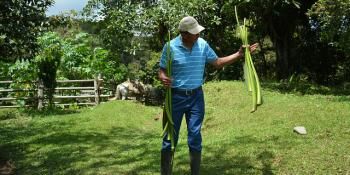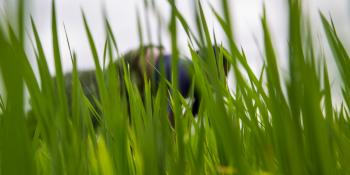How local fruit trees contribute to food security and resilience in the Climate-Smart Village of Daga-Birame, Senegal

Motivated during an exchange visit, population of Daga-Birame is taking advantage of fruit trees.
In a festive atmosphere and dressed in their holiday outfits, women of Daga-Birame in central Senegal are working around large containers. One of these containers contains baobab dried fruit while the rest with the baobab fruit powder. This fruit powder is intended to be packaged in plastic bags and sold at about 2500 FCfa (5 dollars) per kilograms. The fruit processing activity became popular in the locality.
The interest of women in the transformation of baobab fruit, neglected before although one of the most popular tree in Senegal, began with an exchange visit to the locality of Linguère-Dahra. The people of the host locality demonstrated the value of this fruit and its output capacity.
The following year, Daga-Birame women have produced nearly 100 bags of 500g. They are organized in different processing committees to ensure marketing and quality management of the final product.
A decision to increase the number of fruit trees
At the Daga-Birame Climate-Smart Village (CSV) of the CGIAR Research Program on Climate Change, Agriculture and Food Security (CCAFS), a number of initiatives have been developed and documented under the different components of the CSV approach. Of major interest is the community’s decision to seek ways to increase the population of local fruit trees in their village. This decision was prompted after the Daga-Birame community, on a study tour in Linguère-Dahra community (a drier environment), learned that the baobab (Adansonia digitata) fruit juice that they were served came from the Kaffrine region. Their decision was to also benefit from this resource available in their surroundings. Considering the available baobab trees in the community were subjected to poor management that could endanger their existence and further pose threats to the baobab fruit juice business, the village community with the support of the Senegalese Agricultural Research Institute (ISRA) and other local partners, decided to ban cutting and excessive pruning of baobab. The vision is to replenish the village with tree cultivars suitable for the local environmental conditions and bearing desirable fruit quality traits (such as abundant pulp, taste, etc.). A demonstration trial was planned with 2 cultivars of baobab (a grafted one and a local one). This was also an opportunity to include four cultivars each of two other species: Ziziphus mauritiana (jujube) and Tamarindus indica (tamarind) which farmers identified as priority tree species of interest. The improved tree cultivars of the three species were obtained from the World Agroforestry Center (ICRAF). Grafting with improved cultivars aimed to shorten the vegetative phase of these species. For instance grafted A. digitata (baobab) will fruit in five-year time while the non-grafted will take long time (more than 10 years). Similarly, grafted Z. mauritiana has fruited 6 months after planting.
Fruit trees help in food and more balanced nutrition
Such initiative is in line with the objective of the CSV approach. Indeed, local fruit tree will help in food and more balanced nutrition. Also income generated from the sale of fruits harvested from the trees will be used for complement food purchase (in year of poor crop harvest) and for other social needs (health care, cloths, etc.). Moreover such income could also be of great help in investment requirements to increase farmers’ adaptive capacity in agriculture (purchase of suited improved crop varieties and other agricultural inputs). In a longer term perspective, improved tree biomass in the community will help mitigate climate in general and reduce risk of major climate hazards such as strong winds, erosion and flooding. When soundly planted on farm lands, trees contribute to improving soil fertility and consequently increased productivity.
However, some constraints might be faced with trees plantation; they are subject to grazing by free-roaming animals and to water scarcity especially in the Sahelian context where water is major limiting factor. Also some soil in this context might be so degraded that it becomes difficult for tree seedlings to establish and thrive. In such conditions it is necessary for local farmers to protect young trees, water them and possibly fertilize them with manure. An attempt to that is the installation of a water pump working with solar power. A good lesson we can learn is that it is possible from one entry point, baobab tree, to expand the number of promoted species and the scale from planted plot to a protected forest.
The CSV approach is an initiative of the CCAFS aimed at building more climate resilient farming communities.
CSV has four components: (i) climate information services, (ii) development of climate-smart technologies/practices, (iii) local development planning and (iv) local knowledge and institutions. Initiatives within each component might vary from one site to another; however the lessons learnt could guide the scaling out to benefit larger populations or regions.
Read more
Diaminatou Sanogo is a researcher at the Senegalese Institute for Agricultural Research (ISRA)
Dansira Dembele is communications assistant at CCAFS
Djibril Dayamba is a researcher at the World Agroforestery Center (ICRAF)



